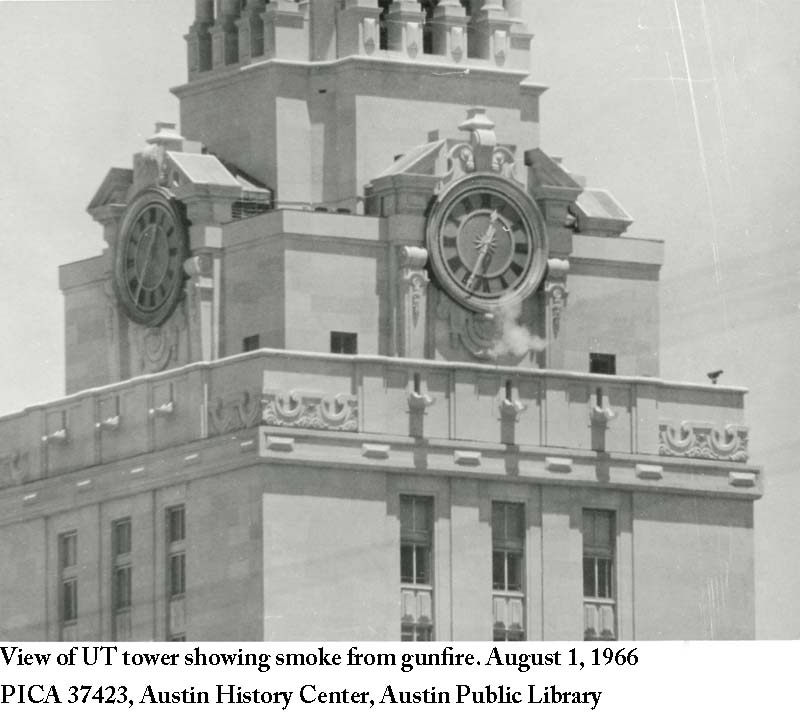Looking Back: 50 Years After the UT Tower Shooting
July 26 - November 20, 2016

On August 1, 1966, Charles Joseph Whitman, a twenty-five year old University of Texas student and ex-marine, climbed to the top of the iconic University of Texas Clock Tower and went on a shooting spree, killing 14 people and wounding at least 33 others. In the early morning hours prior to the UT attack, Whitman murdered his beloved mother and then his wife in cold blood. Another individual died years later of complications from a gunshot wound inflicted during the UT attack, bringing the total death toll to 17. At the time, this seemingly senseless massacre of civilians was unprecedented and considered the worst mass murder in modern U.S. history. The AHC’s new exhibit, “Looking Back: 50 Years After the UT Tower Shooting” seeks to better our understanding of this tragic event, both in the context of its time and impact locally, as well as how we can and should learn from the experience today as our country continues to experience a seeming epidemic of mass shootings on school campuses and other public areas. The exhibit opens July 26 and runs through November 20, 2016.
August 1, 2016 marks the 50th anniversary of the UT Tower shootings. It is also the day that Senate Bill 11, the concealed “campus carry” law goes into effect, allowing those with concealed handgun licenses to carry concealed handguns on public university campuses across the state of Texas. According to the FBI, mass shootings are on the rise in the United States. In 2015 alone, there were 372 such shootings, 64 of which took place on school campuses. As recently as June 12, 2016, the worst mass murder in our nation’s history in a public space as well as the deadliest terror attack since 9/11 occurred in an Orlando, Florida nightclub when a gunman armed with semi-automatic weaponry took the lives of 49 innocent people and wounded at least 53 others. Given these sobering statistics, this exhibit asks the viewer to explore what the UT Tower shooting means for us today as a society. Was this tragedy and others like it preventable? What role does mental health play in such tragedies? What about gun legislation or its inconsistency across states? By preserving the memory of this horrific event, it is our hope that we as a people can better understand why it happened in the first place in order to prevent more tragedies like this one from happening in the future.
The exhibit draws heavily on the records of the Austin Police Department’s (APD) Charles Whitman mass murder investigation, which came to the Austin History Center in 2000 and 2002. Since that time, materials from this collection (AR.2000.002) have been among the most frequently requested and cited in the Austin History Center’s Archives and Manuscripts Collection. The vast majority of the collection is comprised of reports filed by APD along with work done by local, state, and federal agencies working in conjunction with APD such as the Texas State Department of Public Safety, Travis County, and the Federal Bureau of Investigation. A smaller yet highly significant portion of this collection includes the diaries, writings, photographs, and personal effects belonging to Charles J. Whitman. Gathered during the investigation as evidence, they have since been used by researchers worldwide and those affected by the tragedy to try to make sense of this senseless act of violence.
Click the thumbnail images below to view more from the exhibit. Visit the AHC to see the exhibit in its entirety July 26 through November 20, 2016.